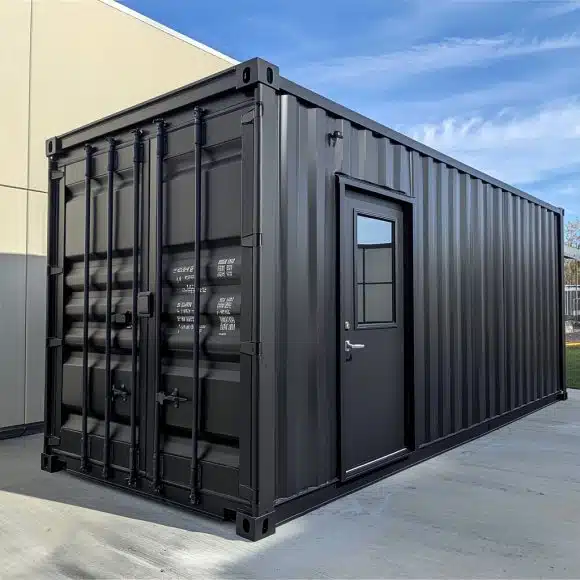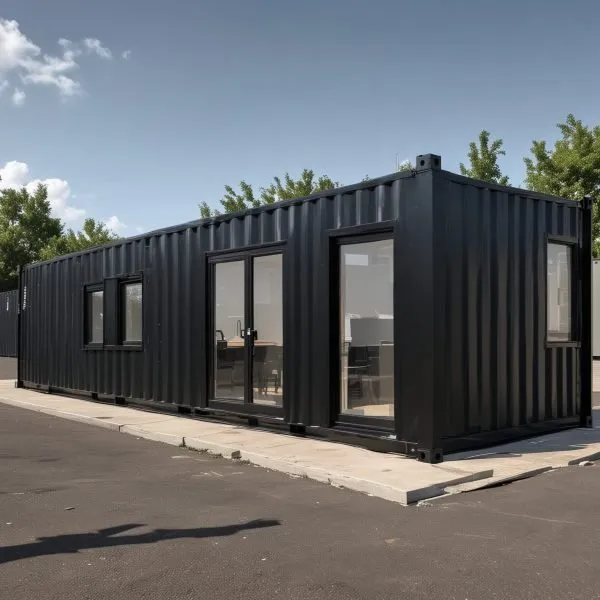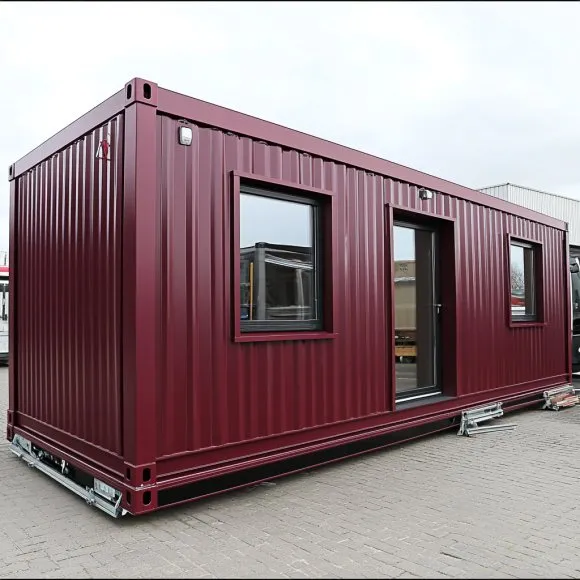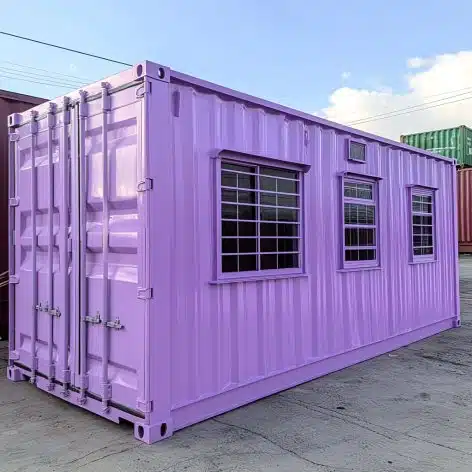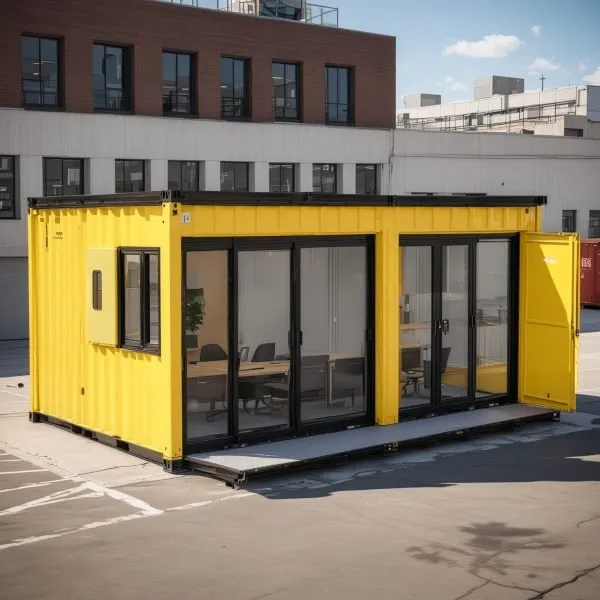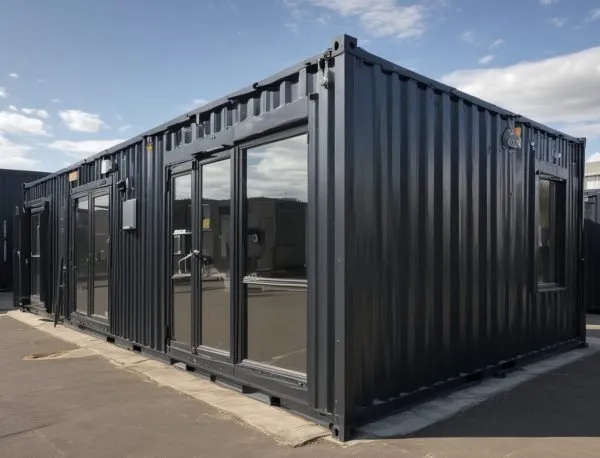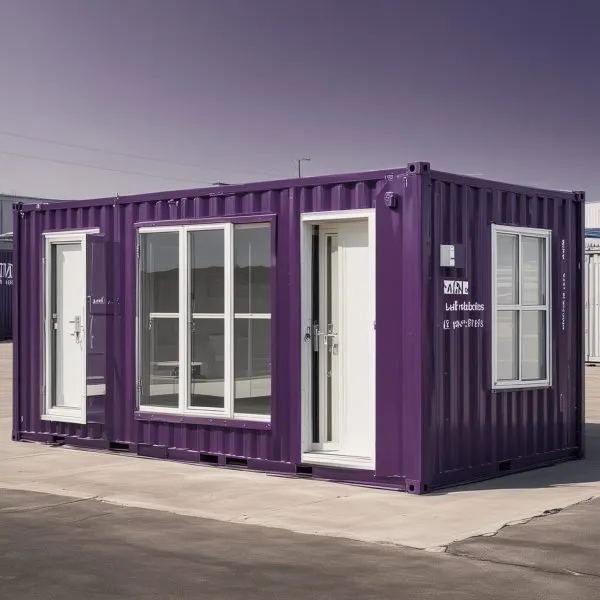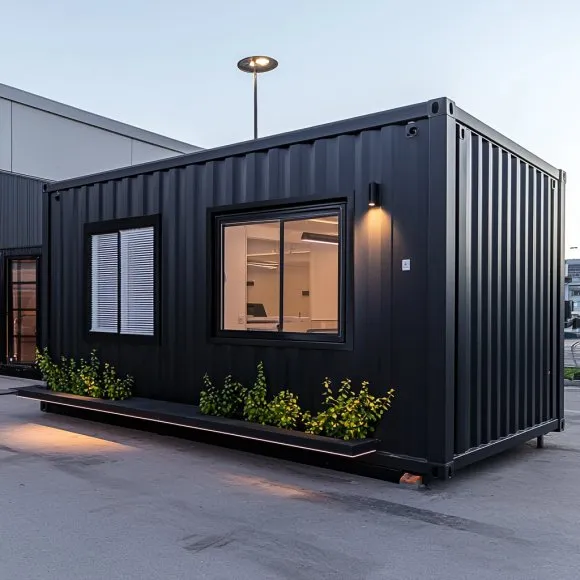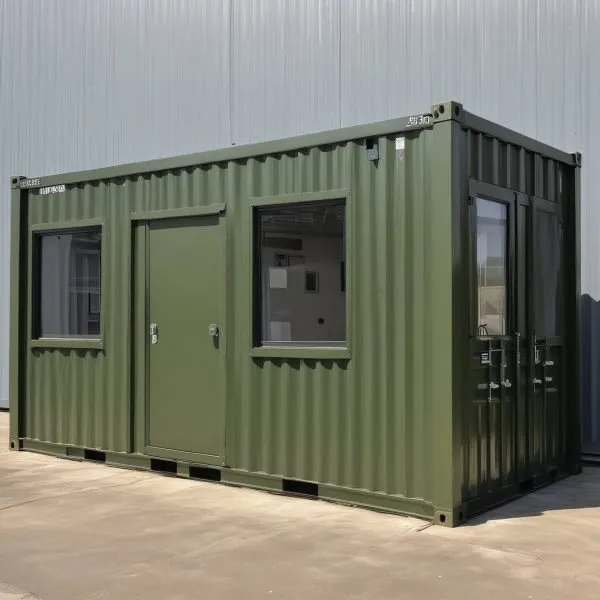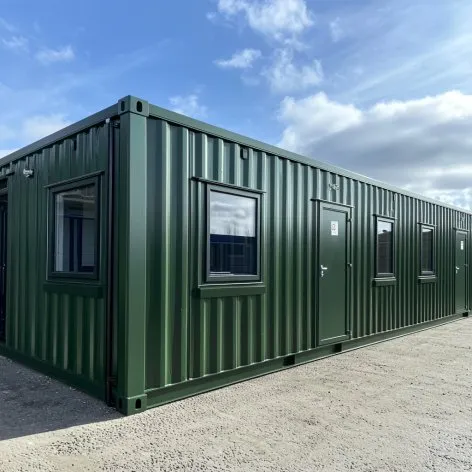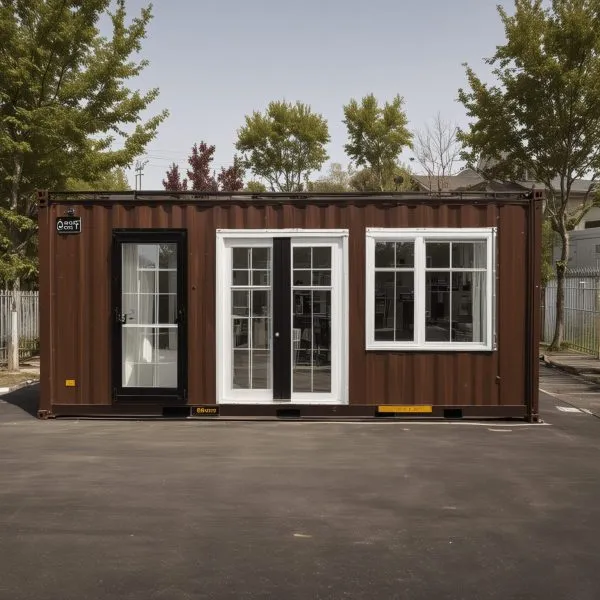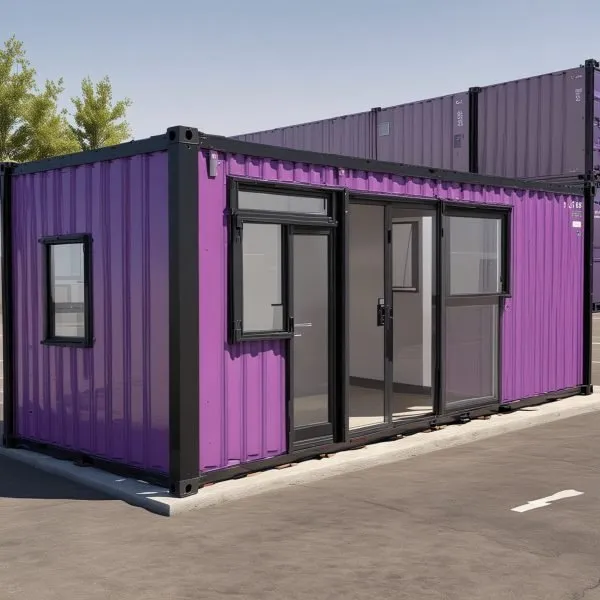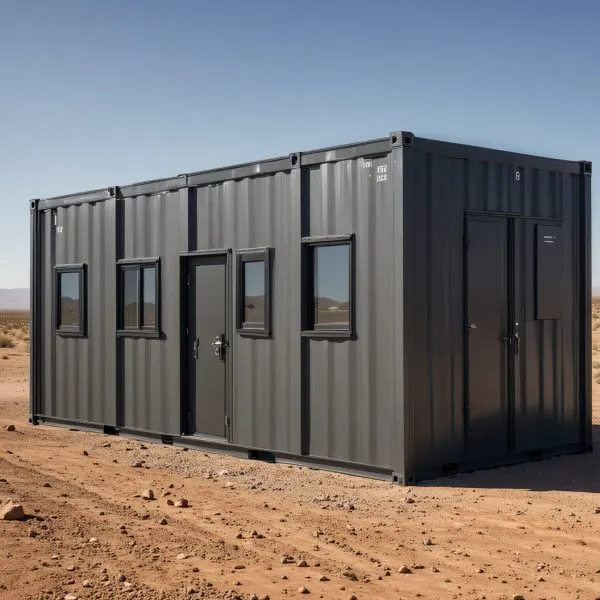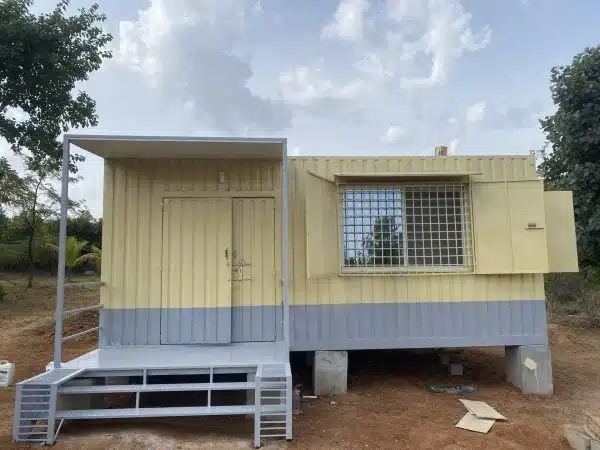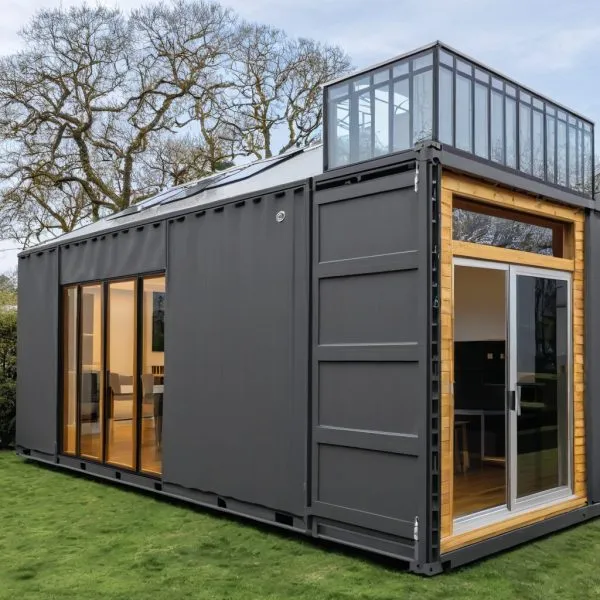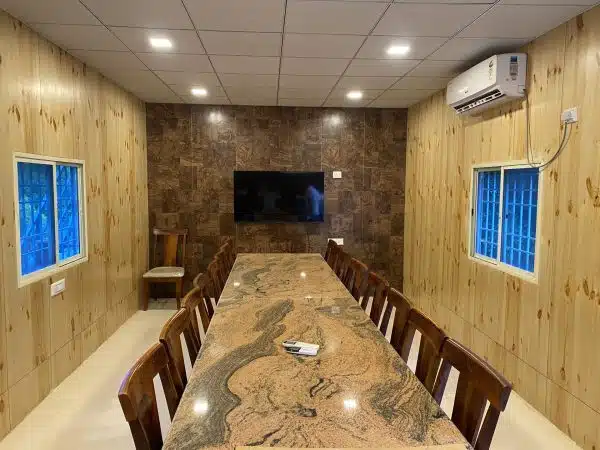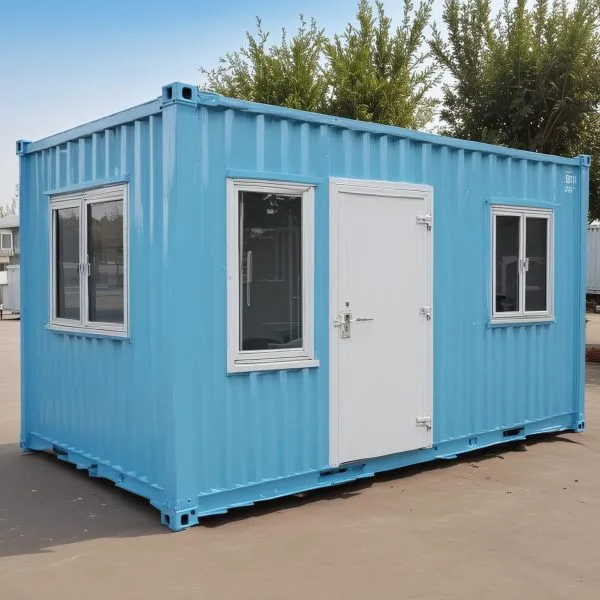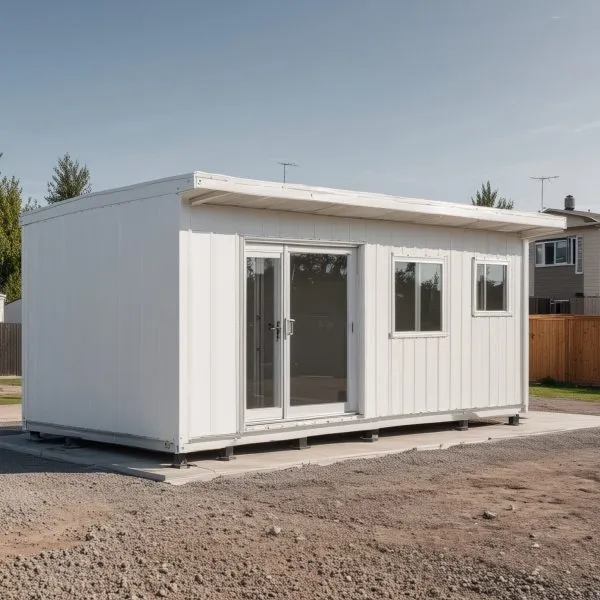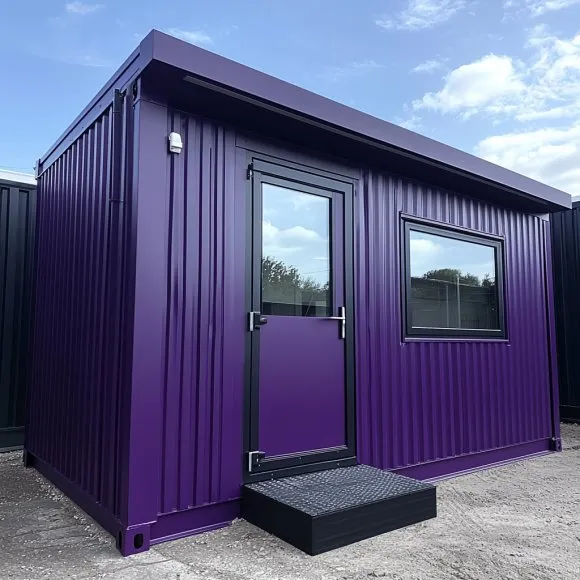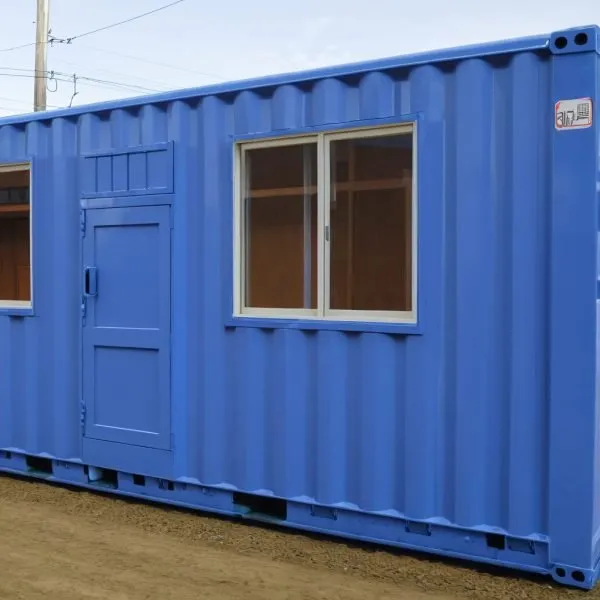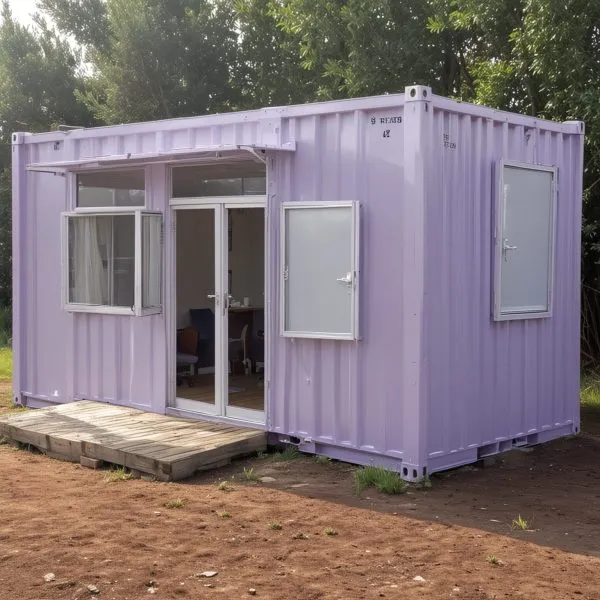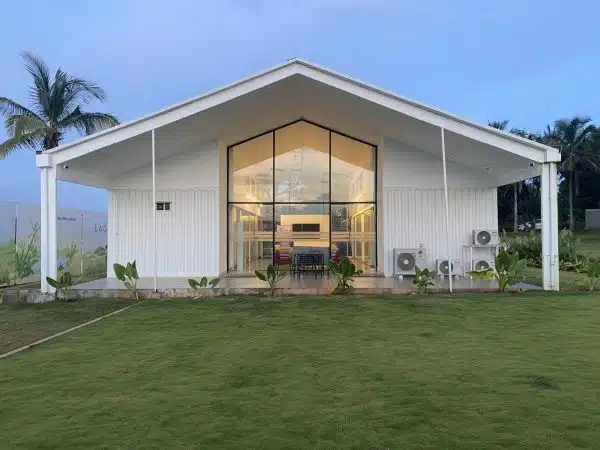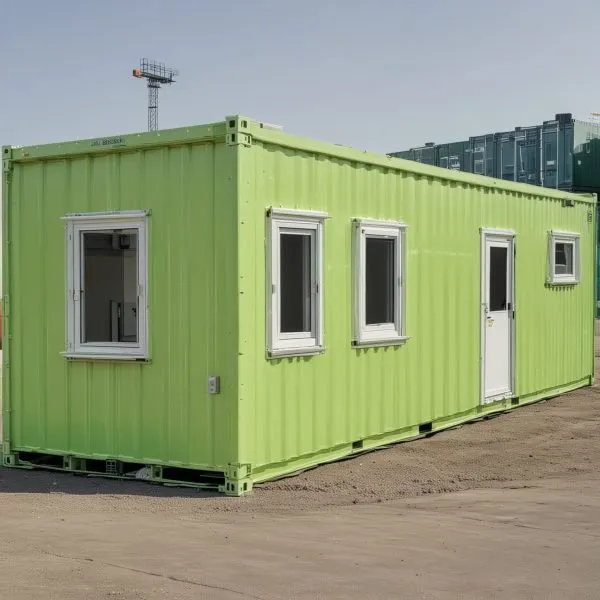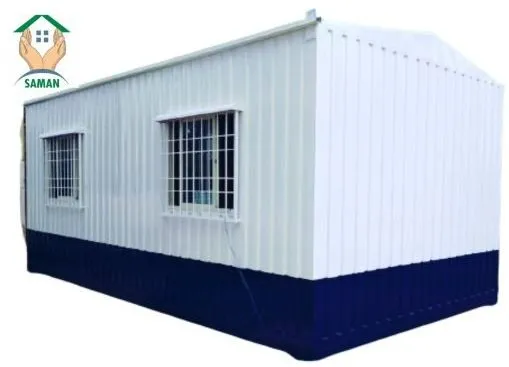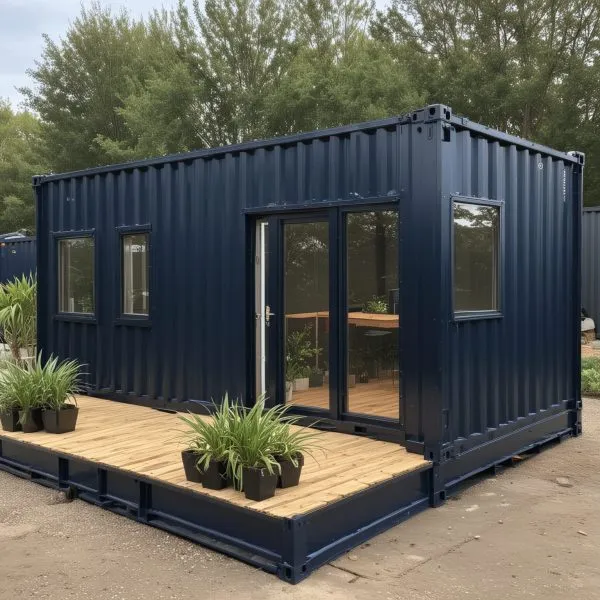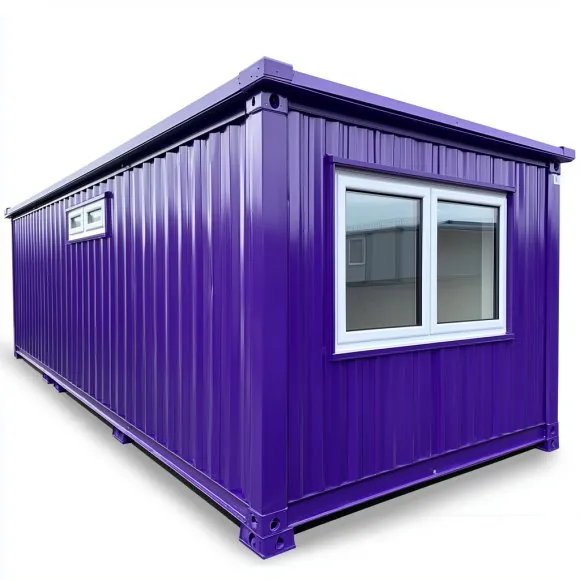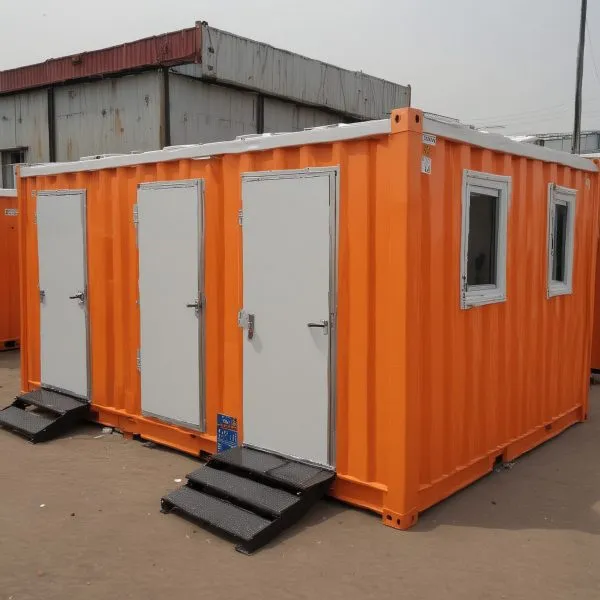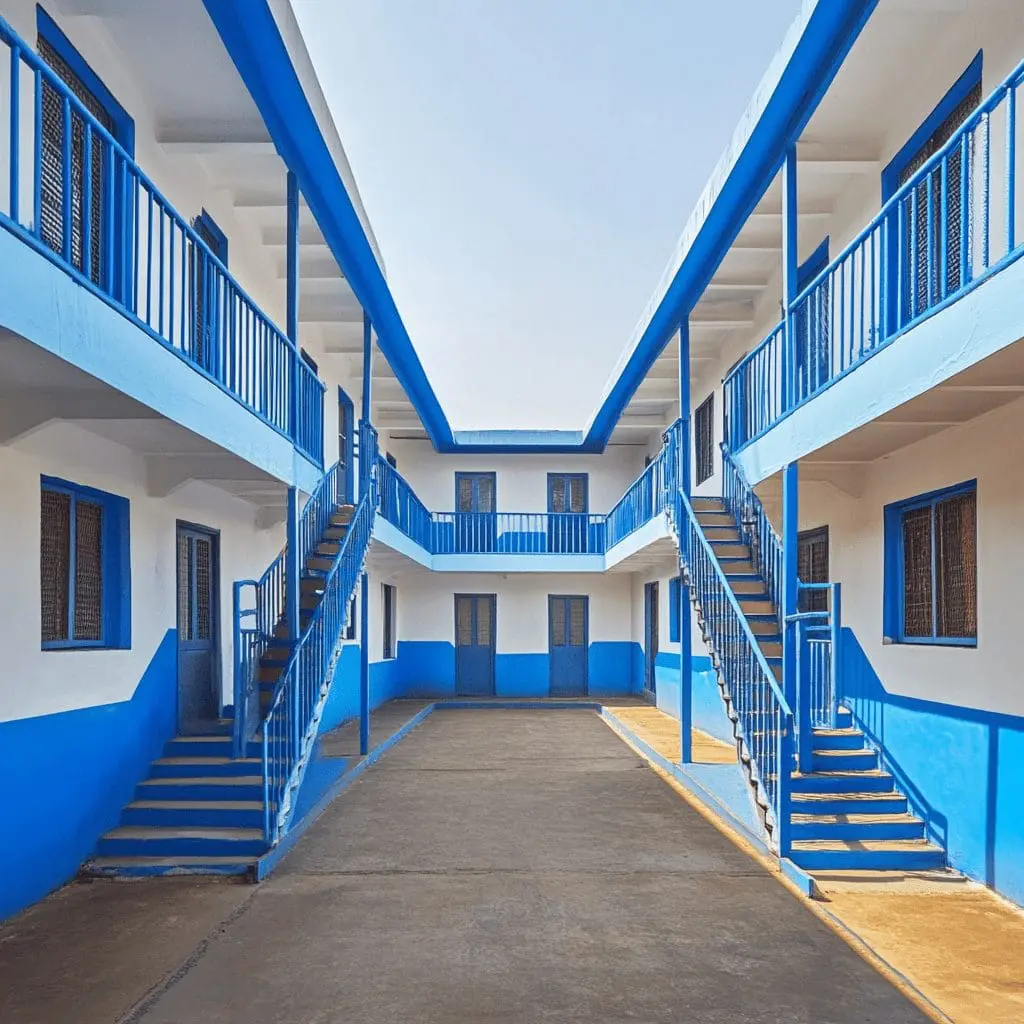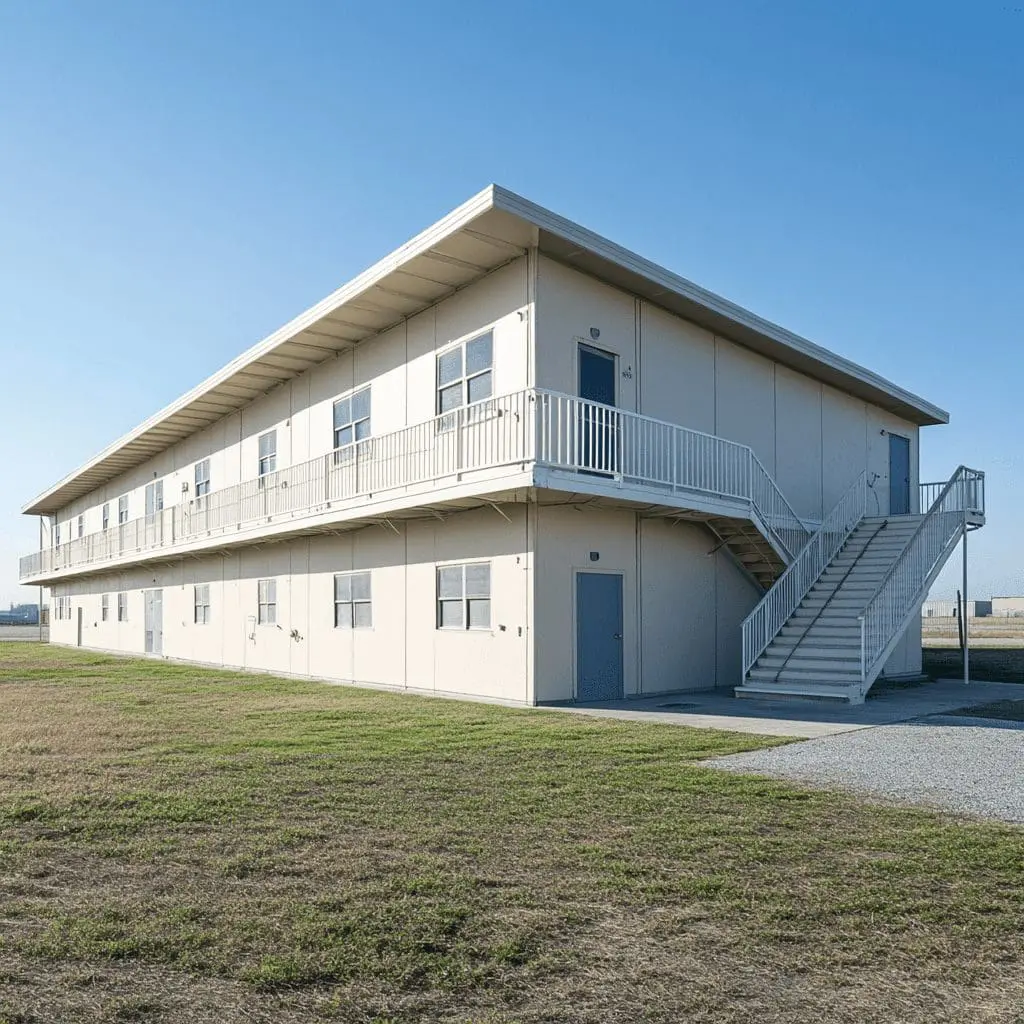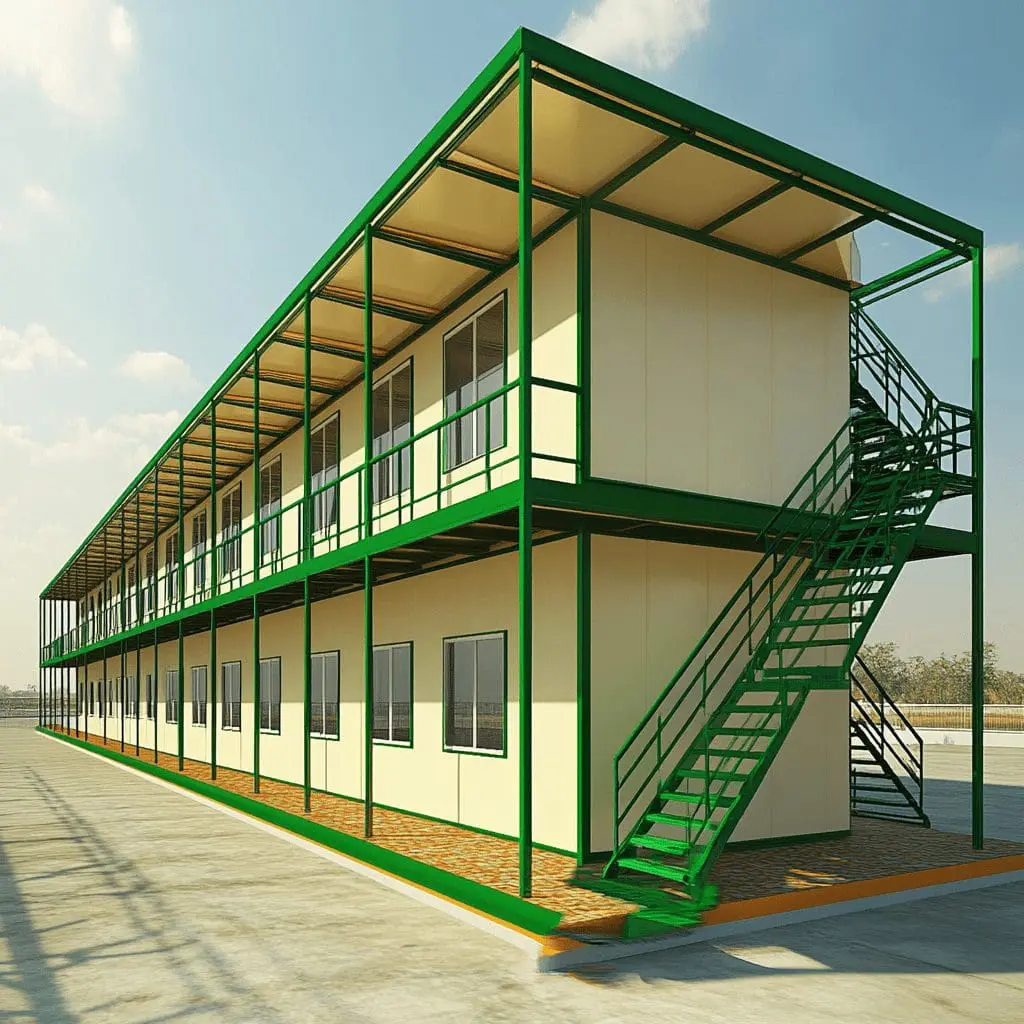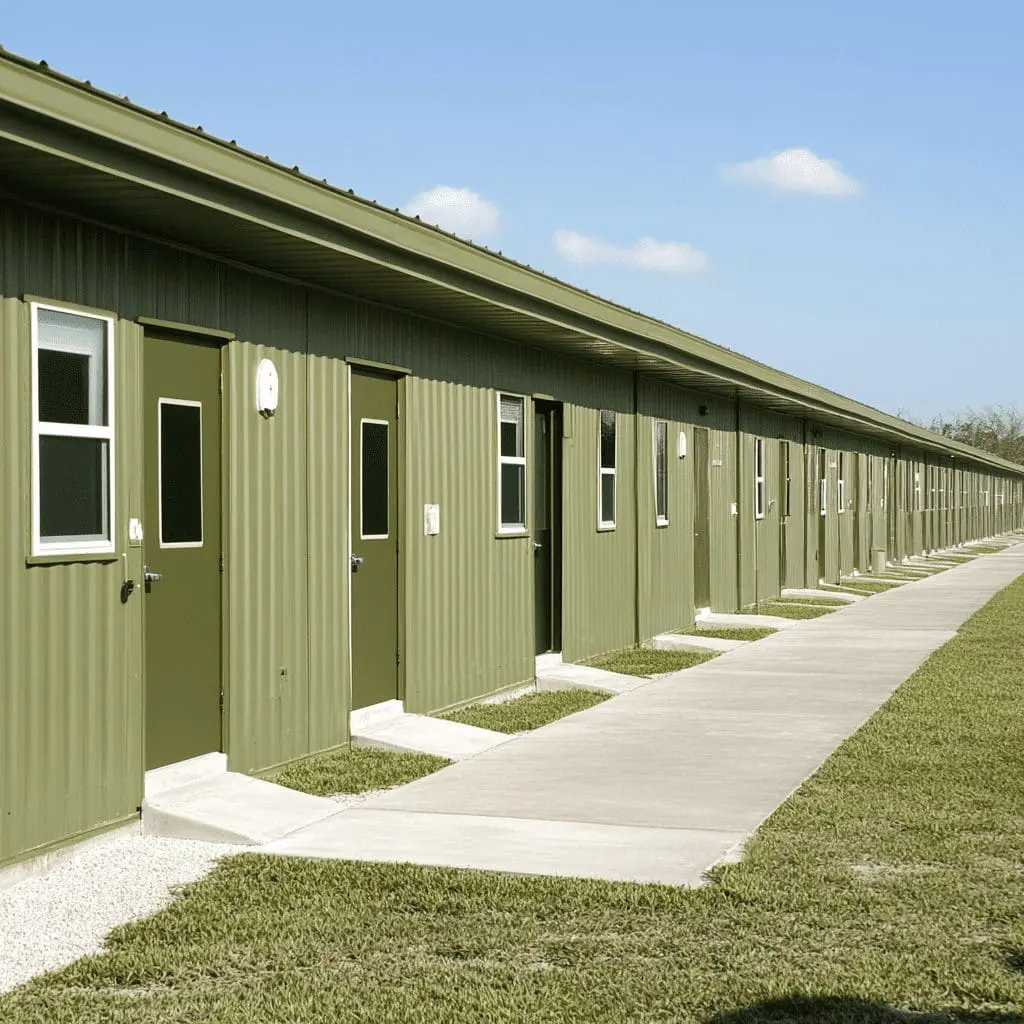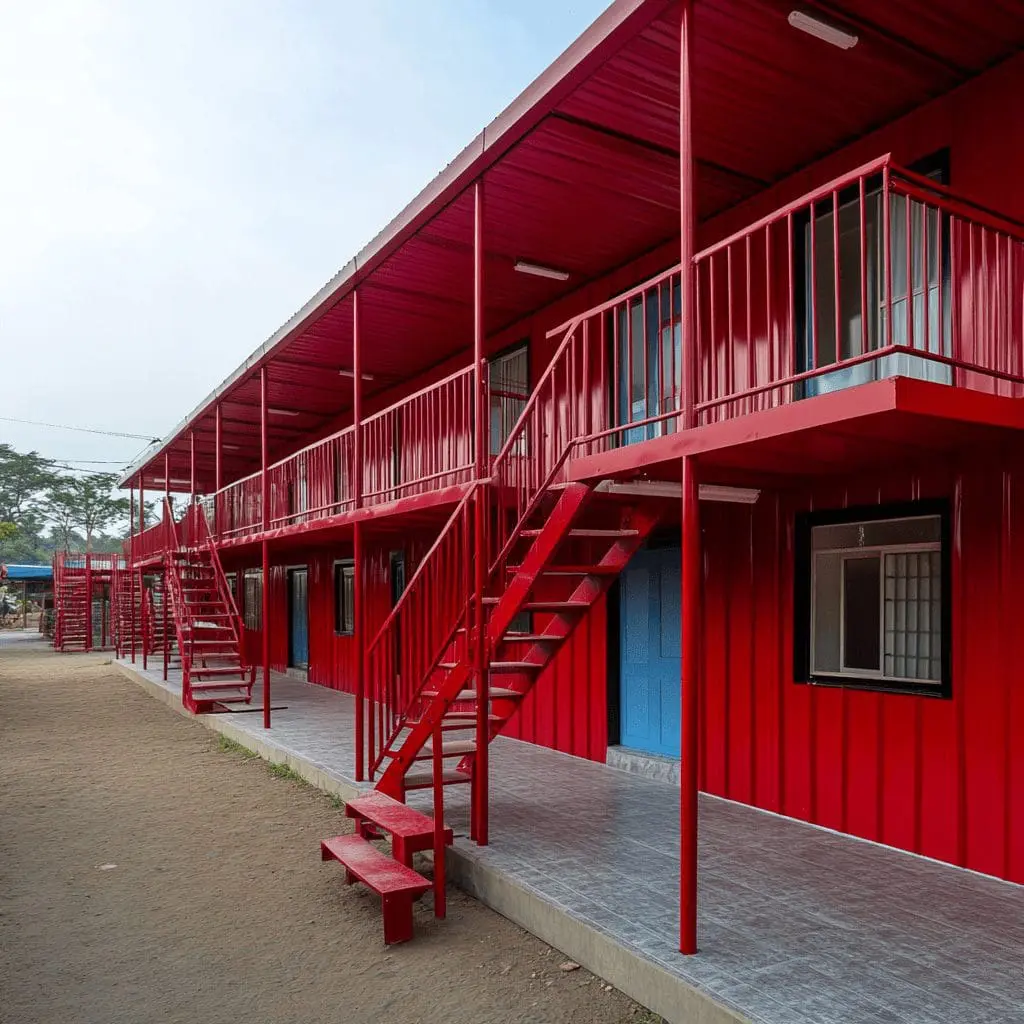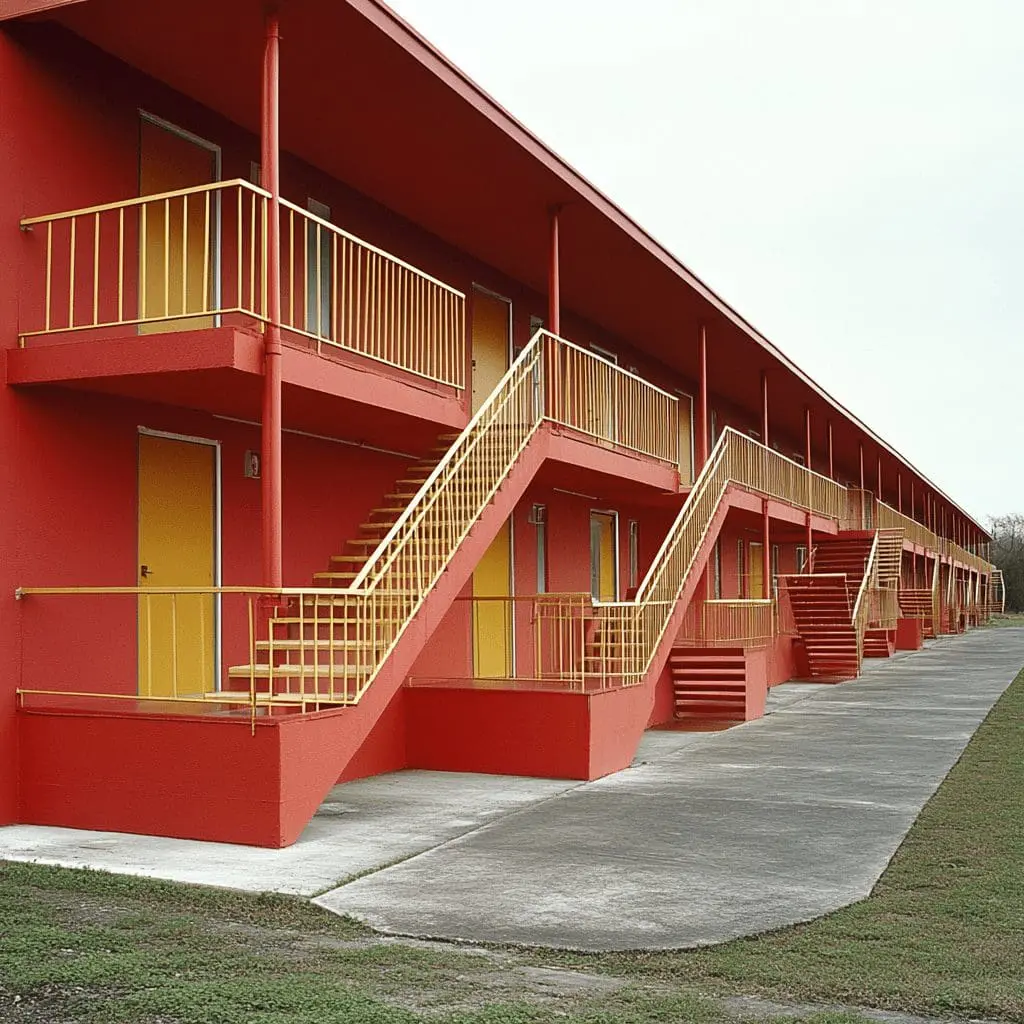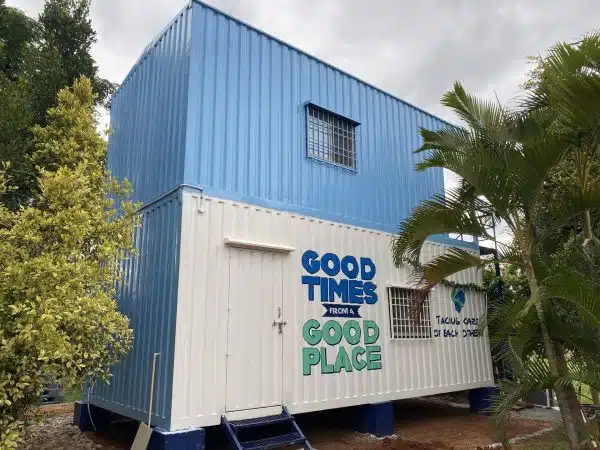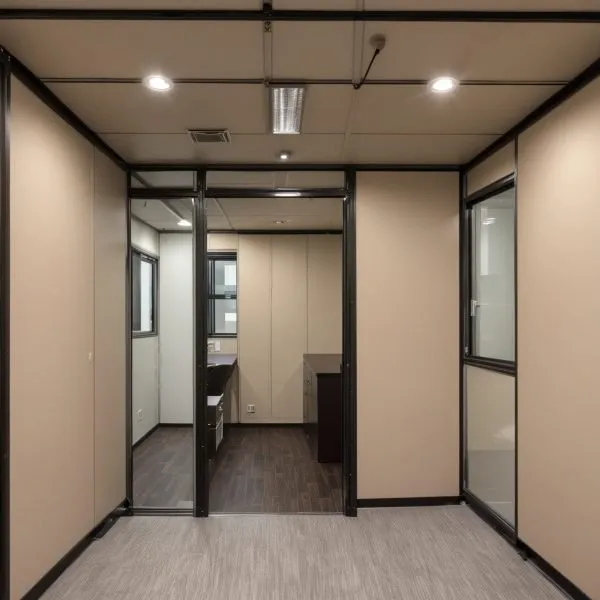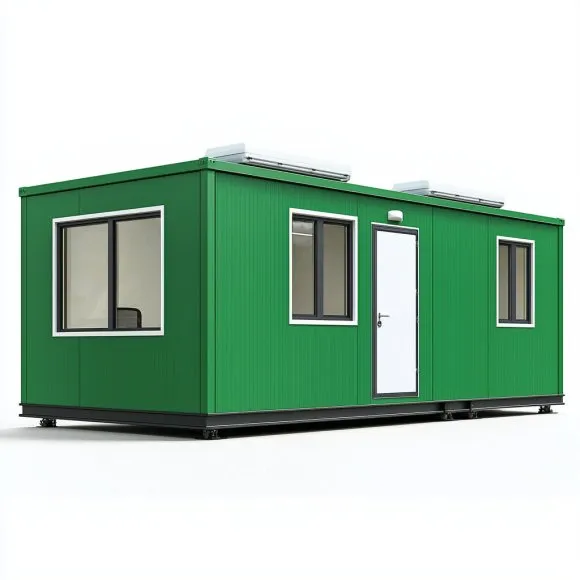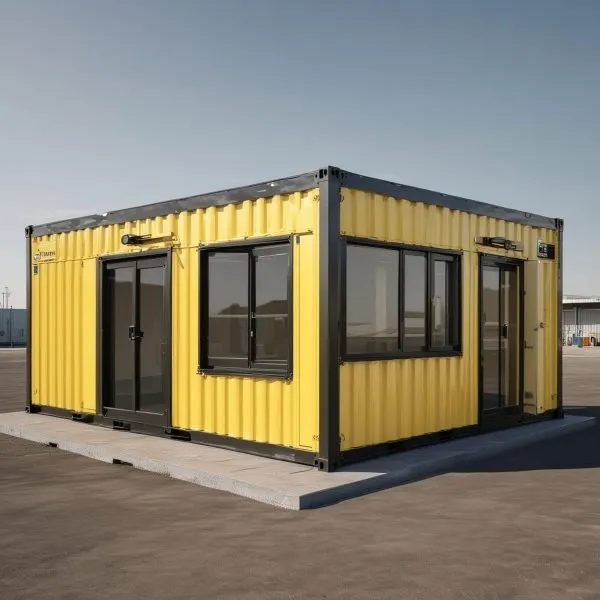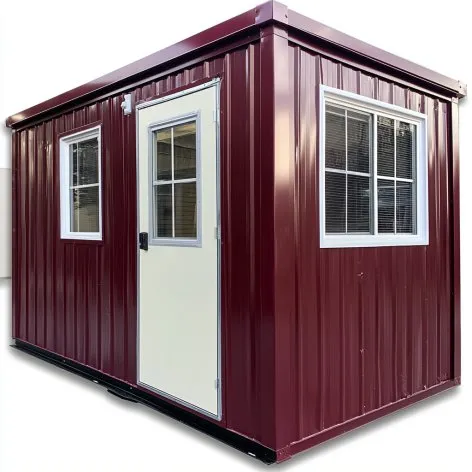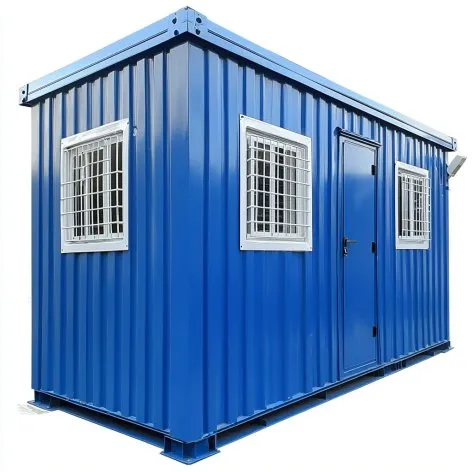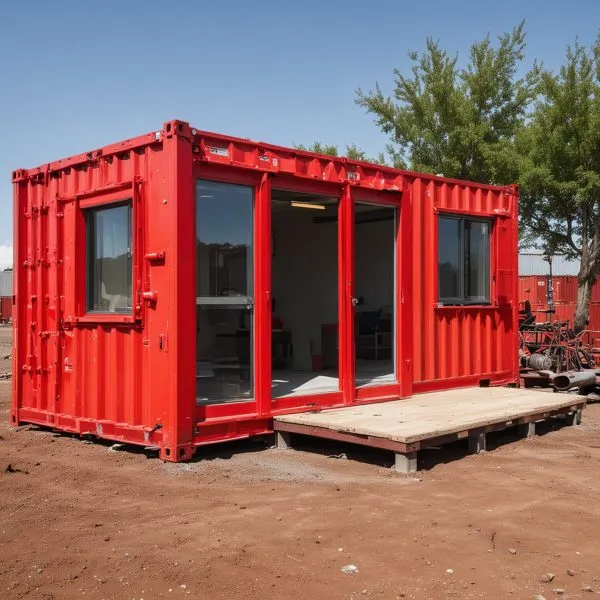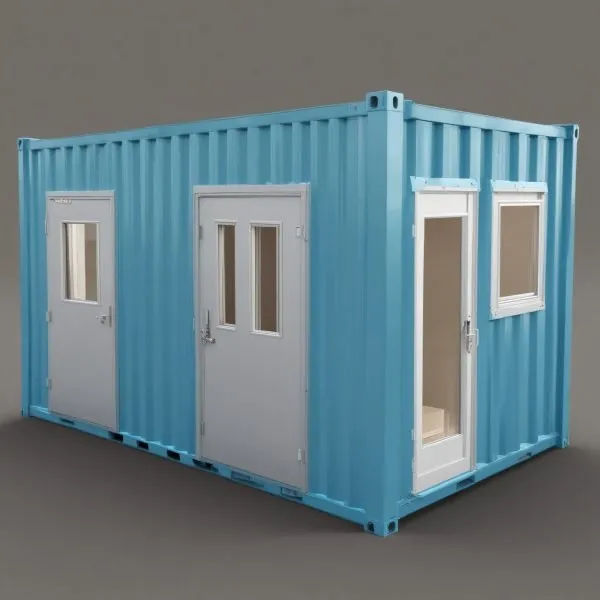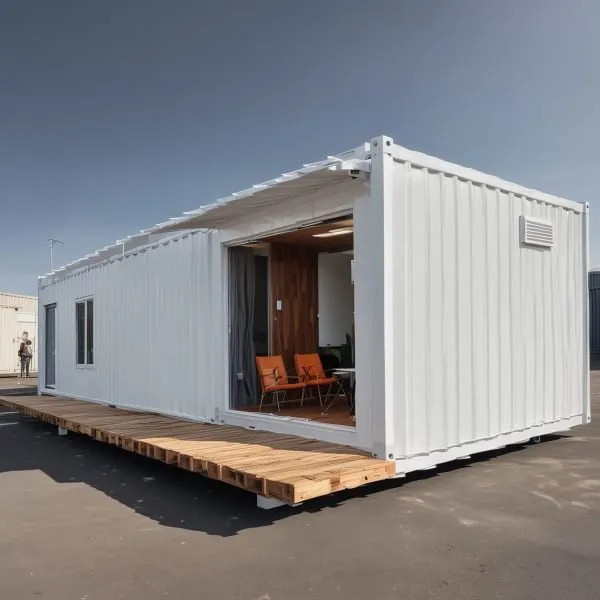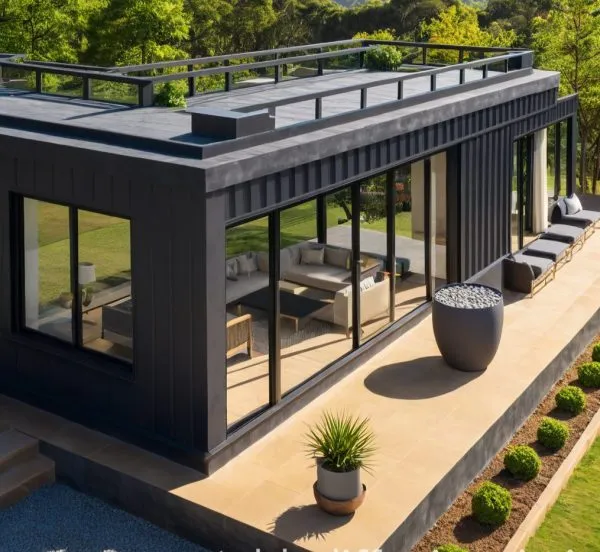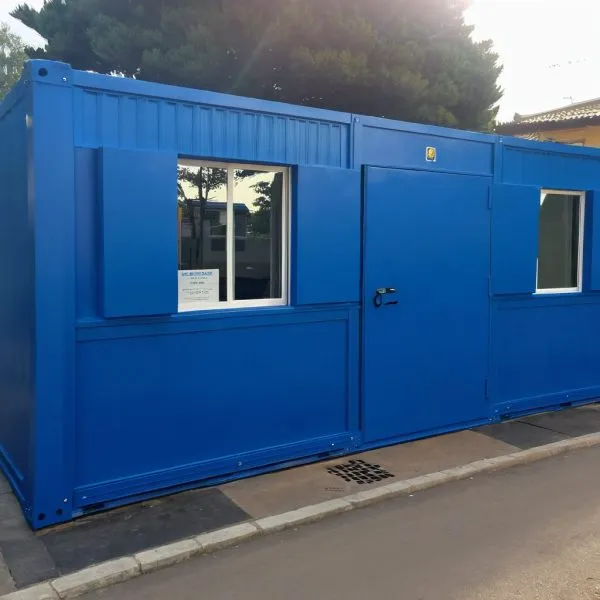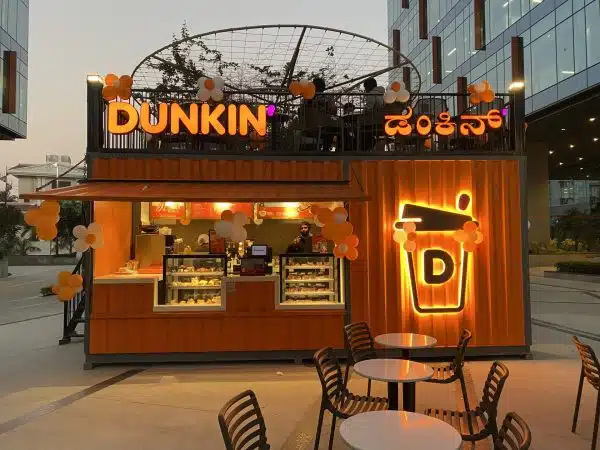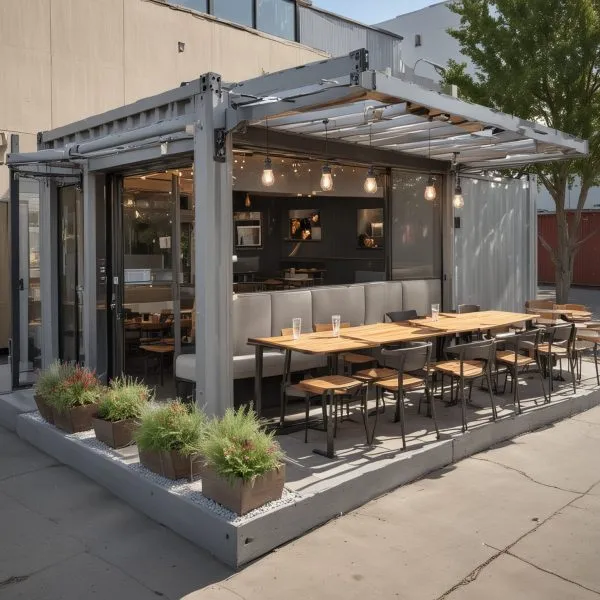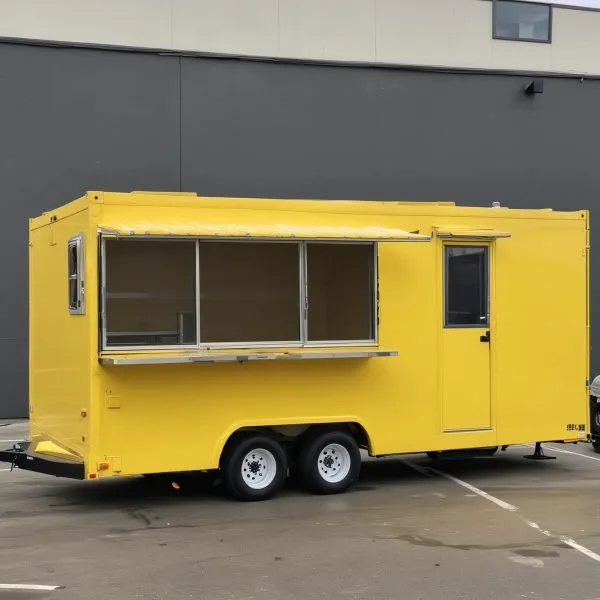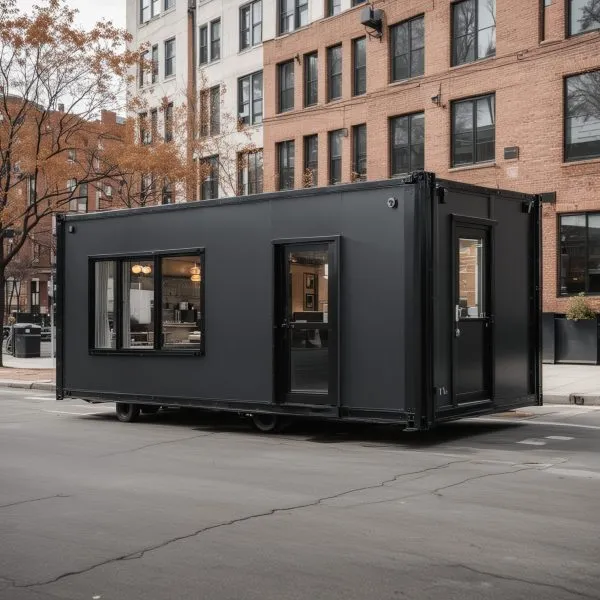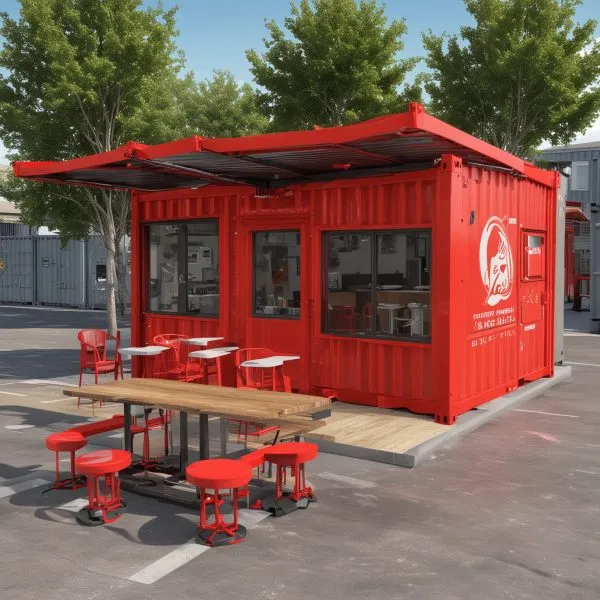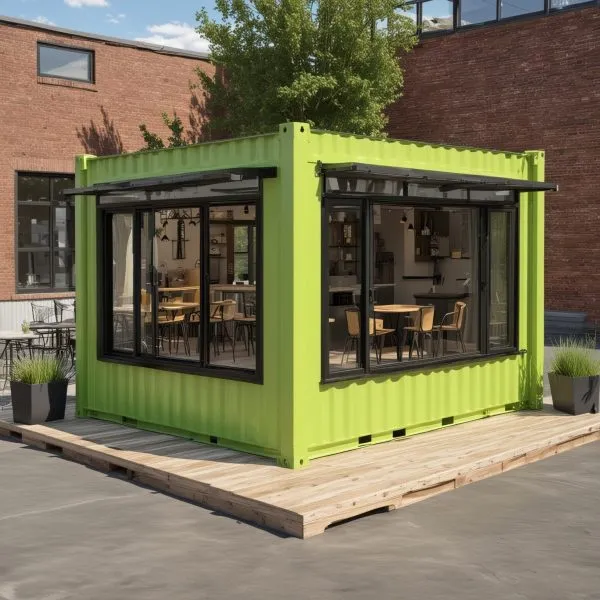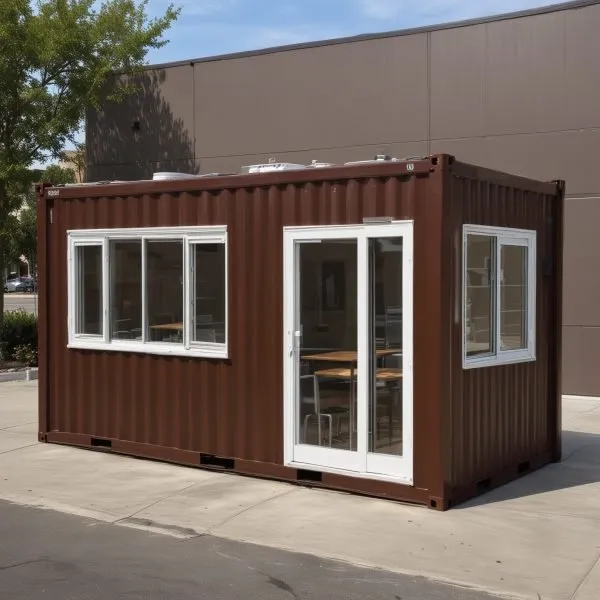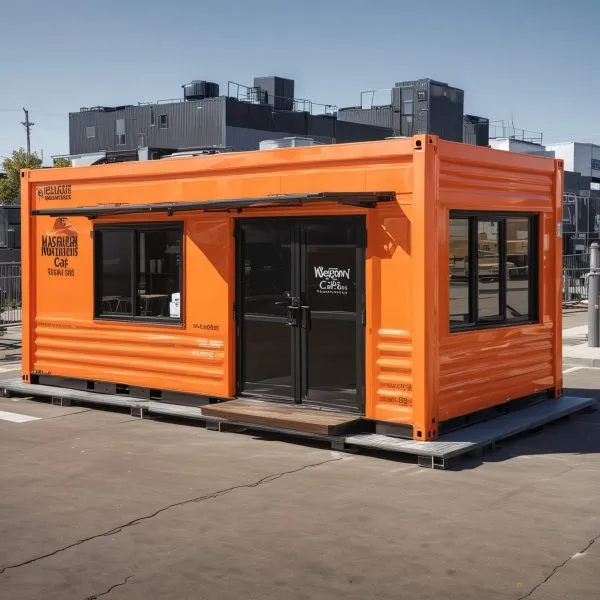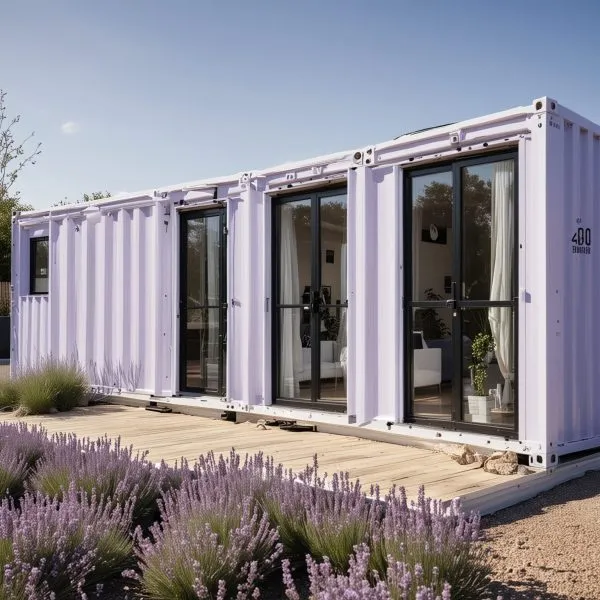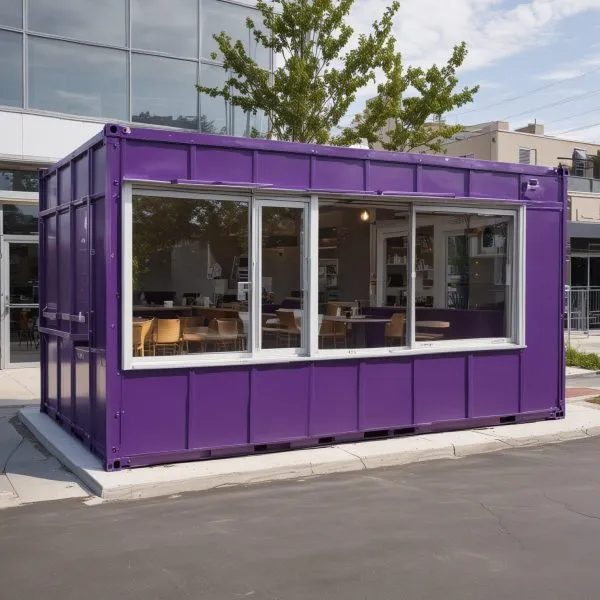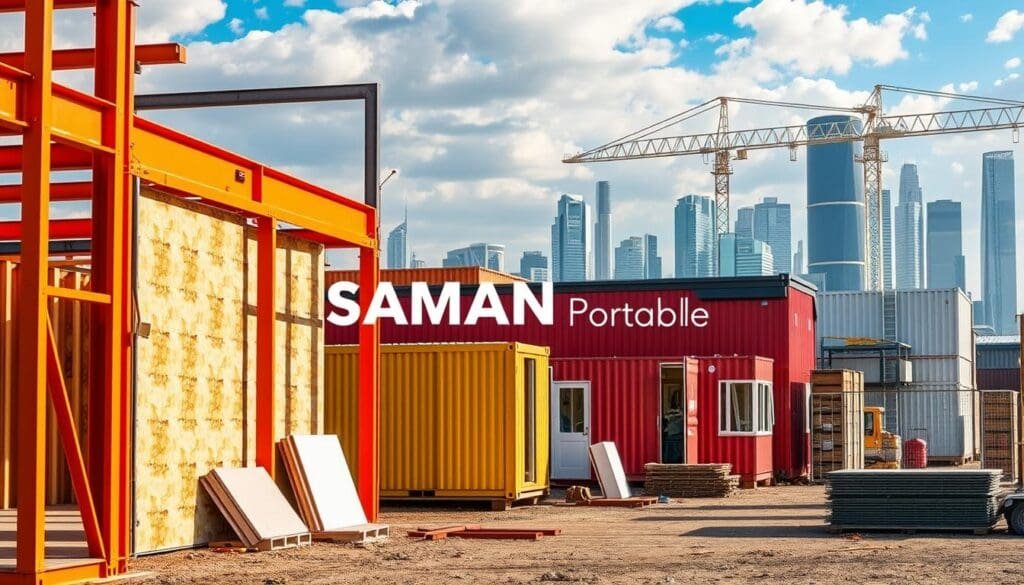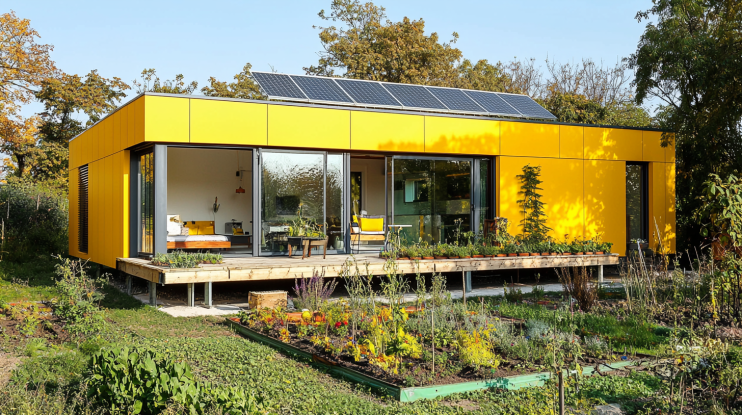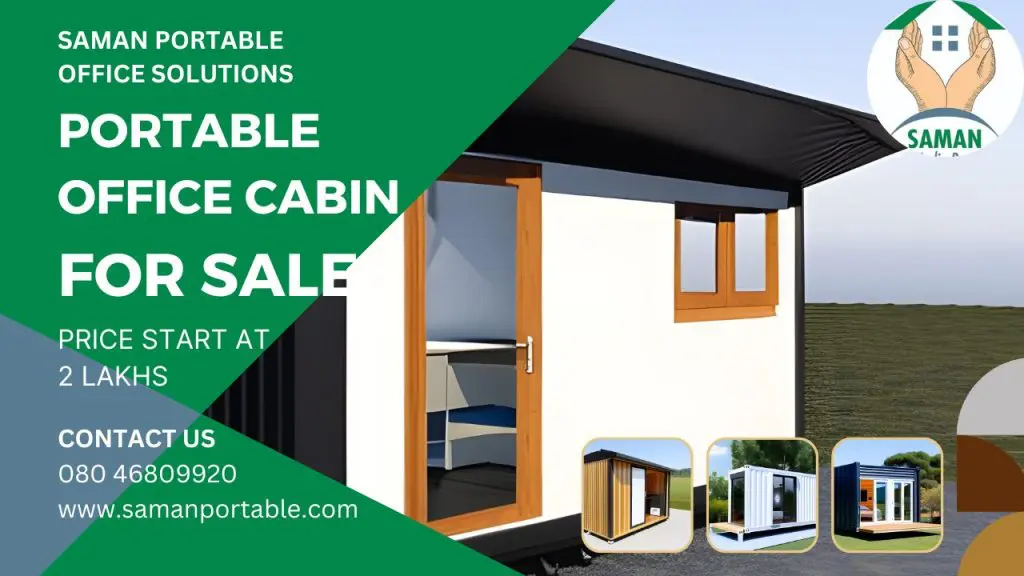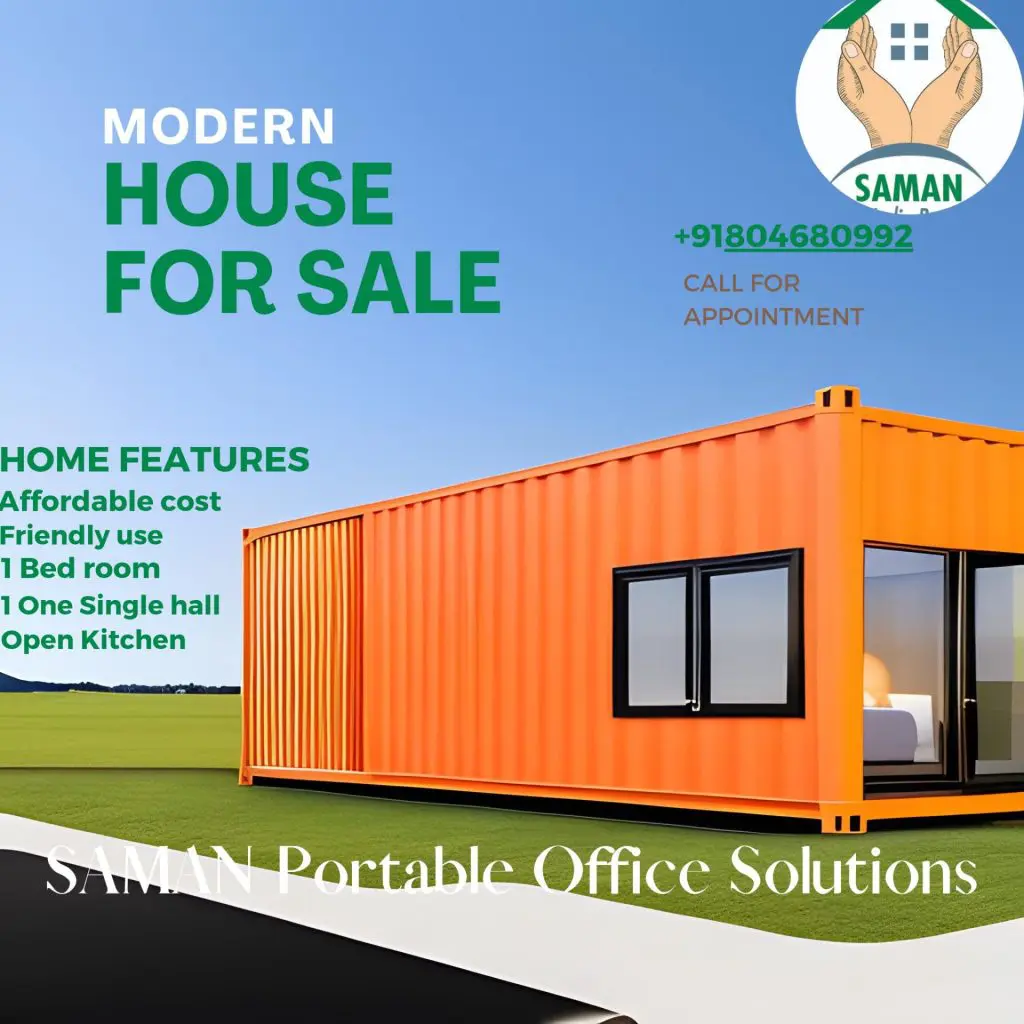Exploring 9 Magnificent Prefab Cottages: Modern Living Redefined
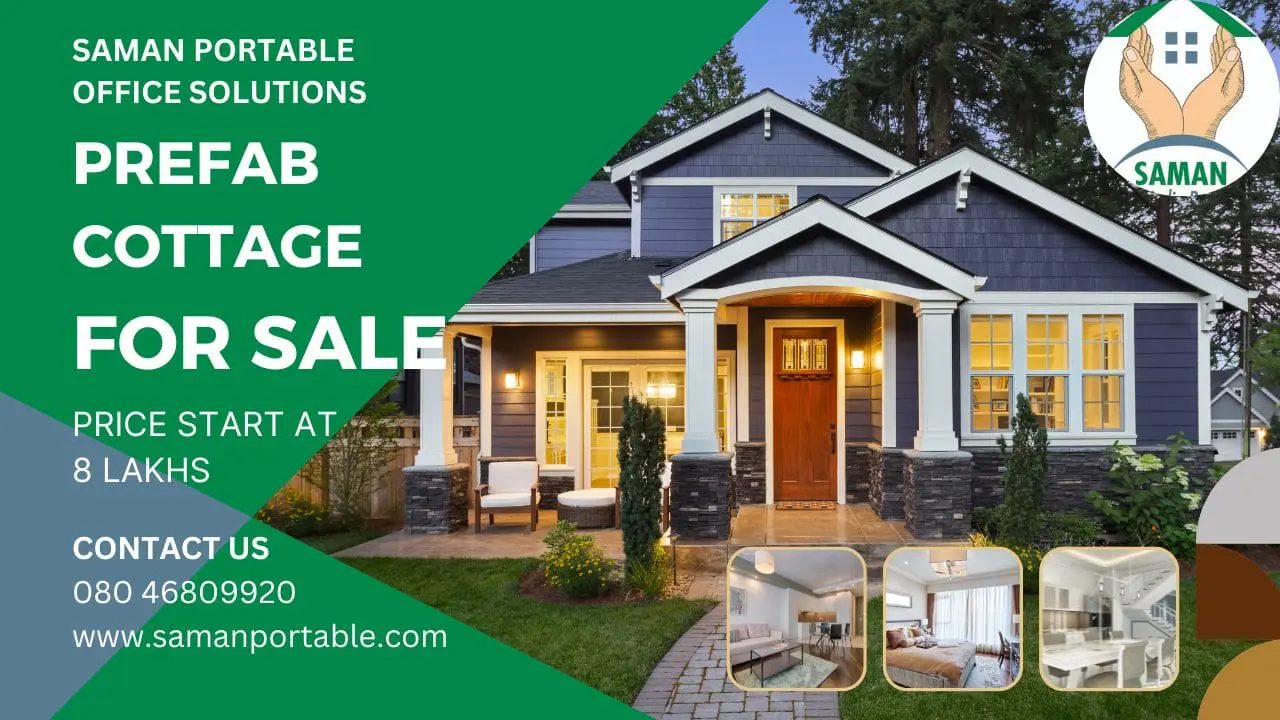
The housing world is changing fast, and prefab cottages are leading the way. They’re changing how we think about living today. But what makes them special? Are they the future of homes that are green, tailored to you, and affordable? Let’s dive into the world of prefab cottages and meet the companies making it happen.
Key Takeaways
- Prefab cottages offer a unique blend of modern design, customization, and sustainability, such as modular portable cabins.
- Leading companies like SAMAN Portable Office Solutions and Saman Prefab, are at the forefront of the prefab housing revolution.
- These prefab homes boast impressive durability, with a lifespan exceeding 50 years and the ability to withstand extreme weather conditions.
- Customization and personalization are key features, allowing homeowners to tailor their living spaces to their specific needs and preferences.
- Prefab cottages are redefining the housing industry, offering a more cost-effective and efficient alternative to traditional construction methods.
Understanding Prefabricated Housing Evolution
Prefabricated housing, like prefabricated container offices, has grown a lot since the 1950s. It started as emergency shelters and now is modern and customizable. In India, companies like SAMAN Portable and Saman Prefab have made prefab panels for the country’s weather, budget, and style. Modern prefab cottages bring many benefits, similar to portable office containers.
Historical Development of Prefab Homes
Prefab construction has a long history. The Eiffel Tower in 1889 is a famous example. In the U.S., prefab houses were built as early as 1929. Britain started mass production in 1945 after World War II.
The 1960s brought new ideas, like Habitat 67. It was a pavilion made of about 354 modular units.
From Mass Production to Personalized Design
The prefab industry, illustrated by modern prefab tiny homes, has changed a lot. It moved from making the same thing over and over to focusing on unique designs. Now, prefab homes can be made to fit exactly what homeowners want.
This change has drawn more architects and designers into the field. It has opened up neThe prefab market growth in India is looking up.w possibilities for prefab construction.
Current Market Trends
The global prefab buildings market is expected to hit $153 billion by 2026. This shows how popular it’s becoming. In India, prefab homes are still new but are getting more attention.
They are built three times faster than traditional houses. Today, there’s a big push for green homes, smart tech, and blending indoor and outdoor spaces. These trends offer eco-friendly and compact living options for both city and off-grid homes.
Benefits of Modern Prefab Cottages
Modern prefab cottages bring many benefits. They are sustainable, cost-effective, and efficient. These homes, like luxury container houses, are changing how we think about living spaces.
One big plus is how fast they are built. Most of the work is done in a factory. This means the building process is much quicker, saving up to 30% of time. It also cuts down on labor costs, making prefab cottages a smart choice.
- Prefab homes, such as prefabricated portable cabins, can cut heating and cooling costs by up to 60%. This is thanks to their eco-friendly design and special features.
- Building parts in a factory reduces waste by 95%. It also speeds up construction by 30%.
- Modular homes create less than 5% of construction waste. This is much less than the 40% from traditional building sites.
Prefab cottages are also very flexible. They can be used as temporary or permModern prefab cottages let homeowners make their living spaces their owanent homes. Their controlled manufacturing ensures high quality and durability.
Sustainability is another big plus, as seen in sustainable prefab cottages. Prefab cottages reduce site disturbances and waste. They use eco-friendly materials like bamboo, making them even better for the environment.
In summary, prefab cottages are a great choice. They offer flexibility, cost savings, and are good for the planet. These homes are changing residential construction in many ways.
The Rise of Sustainable Prefab Architecture
The world is waking up to its environmental impact, and the construction industry is taking notice. Prefabricated cottages, or kit homes, manufactured cottages, prefabricated cabins, and portable cottages, are leading the green charge. They offer eco-friendly options against traditional building methods.
Eco-friendly Building Materials
SAMAN Portable and Saman Prefab are at the forefront of sustainable prefab construction. They use eco-friendly building materials to cut down on environmental harm. These include recycled plastics, composites, and sustainable timber. They reduce waste and boost the structures’ durability and performance.
Energy Efficiency Features
Prefab construction is known for its energy-efficient design. This design cuts down on energy use for heating and cooling. Pronto’s insulated panels, for example, provide top-notch thermal performance. This ensures a comfortable indoor climate and lowers the building’s carbon footprint.
Environmental Impact Reduction
- Prefab construction produces less construction waste than traditional methods. This is because the factory environment optimizes material use and minimizes on-site waste.
- The modular design and off-site manufacturing of prefabricated cabins and portable cottages reduce site disturbances. This further reduces environmental impact.
- By using recycled materials and energy-saving tech, prefab architecture supports a sustainable future. It’s leading the way for a greener construction industry.
Cost-Effectiveness of Prefab Construction
Prefab construction is known for being very cost-effective compared to traditional building. It uses factory-controlled production to save money in many ways.
One big plus is less material waste. Prefabricated dwellings are made with great precision, cutting down on waste. This means less money spent on materials and less waste to get rid of.
- Quicker construction: Prefab homes are built faster because they can be assembled while the site is prepared. This saves time and money, and you can move in sooner.
- Long-lasting and easy to maintain: Prefabricated dwellings are built to last and need little upkeep. This means you can enjoy your home without worrying about expensive repairs.
- Green materials: Pronto uses eco-friendly materials, like cement-free panels. This choice helps save money by avoiding the cost of traditional materials.
The benefits of prefab construction are clear. It saves money by using materials wisely, working faster, and lasting longer. This makes it a smart choice for vacation homes, getaway cabins, and other portable cabins.
Speed and Efficiency in Construction Process
Prefabricated construction is changing the game in building. It makes the construction process much faster and more efficient. Turnkey cottages, backyard cottages, granny pods, and tiny house living options are leading this change.
Factory-Controlled Manufacturing
The fast timeline comes from the factory work. SAMAN Portable does 80-90% of the work in a factory. This avoids weather delays and ensures quality.
This method cuts down on-site work. It means projects finish faster.
On-Site Assembly Timeline
Putting these structures together on-site is quick. Pronto’s panels fit together like puzzles. The whole process, from start to finish, is well-planned.
This makes projects finish in half the time of old methods. It’s great for hard-to-reach places where speed matters.
Prefabricated construction is changing the industry. It brings turnkey cottages, backyard cottages, granny pods, and tiny house living solutions fast and efficiently.
Quality Control and Building Standards
Prefabricated homes, like off-grid cabins and eco-friendly dwellings, follow strict building codes. They are as good as traditional homes. Companies like SAMAN Portable and SAMAN Prefab use advanced facilities. They focus on design and workflow excellence.
The factory setting ensures quality and precise measurements. Components, such as SAMAN Portable’s panels, are tested for weather resistance and safety. This careful process makes sure prefab homes meet high standards.
- Modular homes follow the same building codes as traditional homes, ensuring quality control.
- Prefabricated structures undergo a strict quality control process to ensure high standards of quality and workmanship.
- The quality assurance and quality control (QA/QC) program ensures that all modular components comply with building codes and guidelines and meet the highest quality standards.
- Inspections and tests are conducted throughout the project to ensure that all quality standards are met in modular construction.
Manufacturers focus on quality control and building standards. This means prefab dwellings, including off-grid cabins and eco-friendly homes, are durable and safe. They provide long-lasting living spaces for their customers.
Customization Options in Prefab Cottages
Modern prefab cottages, like prefab log buildings, let homeowners make their living spaces their own. They offer a mix of design choices and material options. This meets many personal styles and needs.
Design Flexibility SAMAN Portable Crafts specializes in eco-friendly building
Companies like SAMAN Portable have many design options. They range from small 1BHK to big 3BHK homes. You can pick modern shapes and custom interiors.
Options include wallpapers, texture paints, veneers, and real wood. This flexibility helps create accessory dwelling units or compact living spaces that are both beautiful and practical.
Material Selection Choices
Manufacturers like Pronto also offer many material choices. You can pick from metal or cement panels for the exterior and interior. This lets homeowners make off-grid living spaces that look great and last long.
Prefab cottage providers give homeowners the power to make their spaces unique. Whether it’s a modern accessory dwelling unit or a cozy portable retreat, the options are amazing.
Smart Technology Integration
The need for affordable homes and quick assembly options is growing. Smart technology is changing the prefab cottage industry. Modern prefab cottages now have advanced features that make living better, saving energy and improving comfort.
Companies like SAMAN Portable and Saman Prefab are leading this change. They design homes with smart features. These include automated lights, climate control, security, and energy management. These technologies are changing how we live in prefab homes.
Smart home tech in prefab cottages saves a lot of energy. Smart thermostats and lights adjust to save power. This makes homes more comfortable and eco-friendly for those who live there.
- Smart home automation options for prefab cottages include:
- Smart locks for better security and no keys needed
- Smart appliances that can be controlled from afar
- Smart security systems with remote monitoring and motion sensors
Combining prefab cottages with smart tech is a big step towards better living. People who choose this are getting more comfort, security, and saving on energy. This is changing what modern home living means.
The market for affordable homes and quick assembly is expanding. Smart tech in prefab cottages will be key. It meets the needs and wants of the tiny house movement.
Space-Saving Solutions and Layout Optimization
Prefab cottages are great at making the most of small spaces. They come with built-in storage, multi-use furniture, and flexible layouts. This makes them feel open and efficient.
Innovative Storage Solutions
Prefab homes have smart storage ideas to use every inch. Modular homes with open layouts can make spaces feel up to 20% bigger. Using vertical space with shelves and hooks can add 15% more storage without taking up floor space.
Multi-functional Spaces
Prefab cottage design focuses on being flexible and adaptable. Using furniture that does more than one thing can cut down furniture needs by up to 40%. This makes living areas more versatile and space-saving.
Custom built-ins and things that can change, like beds with storage or foldable tables, also help use space well. Sustainable construction and prefabricated homes let people create cozy, personal spaces. They do this without losing out on style or function. By using smart storage and multi-use design, these cottages change what we think of small living spaces.
Indoor-Outdoor Living Concepts
Modern prefab cottages are changing how we think about indoor and outdoor living. They often have big windows, sliding glass doors, and patios or decks. This makes it easy to move between inside and outside.
They use green building methods and materials. This helps people feel closer to nature.
The Pronto House in Jaipur, India, shows how prefab homes can merge indoor and outdoor living. It combines indoor comfort with outdoor beauty. This lets people enjoy nature while having modern home comforts.
Companies like SAMAN Portable make prefab homes for different places. They focus on blending indoor and outdoor spaces. This makes life better for those living in them, helping them connect with nature.
Prefab homes and modular homes are becoming more popular. They mix modern living with a connection to nature. This approach to sustainable construction makes living better and supports eco-friendly housing.
Modern Design Elements in Prefab Homes
Prefab homes are more than just places to live. They now have modern design elements that make them the “dream home.” These homes offer contemporary looks and can be customized to fit your style. They even match the luxury of traditional homes.
Contemporary Architectural Features
Companies like SAMAN Portable are making prefab homes stylish and efficient. They use modern designs that are also well-insulated and save energy. These homes have clean lines, big windows, and open spaces. This makes them feel big and bright.
Aesthetic Customization Options
Prefab homes let you choose how they look. You can pick from different outside finishes like wood, metal, or stone. Inside, you can pick from many finishes and fixtures. This means you can make your home look however you want, from modern to traditional.
These modern features in prefab homes are changing how we see portable living. They mix function, green living, and personal style. This is making prefab homes in the luxury market a new kind of dream home.
Transportation and Installation Considerations
Manufacturers have focused on making prefab cottages easy to move and set up. This makes them perfect for remote or hard-to-reach places. They can be delivered and put together quickly, with little disruption.
These structures are designed with mobility in mind. Brands like SAMAN Portable make them easy to take apart and move. SAMAN Portable’s temporary structures fit into shipping containers, making them easy to ship worldwide.
Setting up these cottages is also simple. They use light crane trucks to lift and place the parts. Then, they use screws to hold everything together. This makes building a home fast and efficient.
By focusing on how to move and set up these cottages, manufacturers have solved big problems. They are now a great choice for modern, green, and efficient homes.
In short, prefab cottages are a smart choice for many. Their design and the effort put into making them easy to move and set up are impressive. They offer a new way to live that is modern and sustainable.
Maintenance and Longevity Aspects
Modern prefab cottages are amazing when it comes to upkeep and lasting power. They can last for 50 years with the right care, and come with a 20-year warranty on structure and leaks. Thanks to weather-resistant materials and careful making, these homes stay strong and work well for a long time, needing zero maintenance.
Prefab homes are great for places where earthquakes happen often. They’re built to be safe and strong. This means they can last longer, saving you money on fixes and updates.
These homes are easy to make and move, perfect for hard-to-reach places. They’re also good for areas with hills, making building easier than usual.
To keep prefab homes in top shape, regular checks are important. This includes
- Checking the roof, walls, and foundation every year to catch problems early.
- Cleaning and checking the outside at least twice a year, in spring and fall.
- Keeping plumbing, HVAC, and electrical systems in good working order.
By doing these maintenance tasks, prefab home owners can make their homes last longer. They get to enjoy zero maintenance construction for many years.
Investment Value and Market Potential
The prefab cottage market in India is growing fast. Companies like Vrisa Innovation have won awards for their work in pre-fabricated construction. They are not just building homes, but also luxury farmhouses like Pronto’s in Jaipur.
The benefits of prefab homes are clear. They are affordable, built quickly, and are becoming more popular. This makes them a good investment.
Real Estate Market Analysis
The India Prefabricated Buildings Market is expected to hit USD 13.83 billion by 2024. It’s set to grow at 8.95% CAGR to USD 21.25 billion by 2029. In 2023, it was USD 12.59 billion.
Big names like SAMAN Portable and SAMAN Prefab are leading the market. They are making a big impact.
Future Growth Prospects
The prefab market growth in India, driven by solutions like prefab cabins, is looking up. The construction industry is expected to reach USD 1.4 trillion by 2025. Urban areas will make up 75% of GDP.
India will be the third-largest construction market by 2025. The National Infrastructure Pipeline (NIP) has a USD 1.4 trillion budget. It focuses on renewable energy, roads, and more.
The real estate investment in prefab construction is strong. It’s helped by rising Foreign Direct Investment (FDI) in construction and infrastructure.
Conclusion
Prefab cottages are changing the way we live in India. Companies like SAMAN Portable and Saman Container lead the way. They offer quality, custom, and green prefab homes.
The prefab cottage market is growing fast. It’s set to play a big role in solving housing needs. This includes affordable homes and luxury ones, all while being eco-friendly and stylish.
The global modular construction market is expected to hit USD 114.78 billion by 2028. Prefab homes are quick to build, save money, and are good for the planet. New tech, like generative AI, is making prefab homes even better.
As prefab grows, it will change Indian housing. It combines green materials, saves energy, and lets you design your home. With more investment, prefab’s impact on Indian housing will be huge.
FAQ
What are the key features and benefits of prefab cottages offered by companies like SAMAN Portable, Pronto Panels, and Vrisa Innovation?
Prefab cottages from these companies last over 50 years and come with a 20-year warranty. They can withstand winds up to 180 Kmph. They also have superior insulation and are eco-friendly, making less waste and site disturbance.
They are cost-effective and save time. They offer flexibility and high-quality construction through controlled manufacturing. This makes them a great choice for homes.
How has the prefabricated housing industry in India evolved over time?
The prefabricated housing industry in India has grown a lot. It started with emergency refugee housing in the 1950s. Now, it offers modern, customizable structures.
Companies have worked hard to develop panels that fit Indian conditions, budgets, and tastes. They have moved from simple structures to luxury farmhouses and resorts. They focus on sustainability and eco-friendliness.
What are the key sustainability features and environmental benefits of prefab cottages?
Prefab cottages from companies like SAMAN Portable and Saman Prefab use eco-friendly materials and energy-efficient designs. They are made in factories, which means less waste and energy use.
SAMAN’s panels are well-insulated, which means they use less energy for heating and cooling. This helps reduce environmental impact.
How do prefab cottages compare to traditional construction in terms of cost-effectiveness?
Prefab construction is cheaper than traditional methods. Factories reduce waste and labor costs. This makes projects faster and cheaper.
Prefab structures are durable and need little maintenance. This makes them cost-effective over time.
What are the key advantages of prefab construction in terms of speed and efficiency?
Prefab construction is much faster. Most of the work is done in the factory, avoiding weather delays. On-site assembly is quick and efficient.
This makes the whole process, from design to delivery, smooth. It’s especially good for remote or hard-to-reach places.
How do prefab manufacturers ensure quality control and adhere to building standards?
Prefab manufacturers use top-notch facilities and follow best practices. Modular buildings meet the same building codes as traditional ones. This ensures quality and durability.
The factory environment means consistent quality and precise measurements. Panels are tested for weather resistance and durability.
What customization options are available for prefab cottages?
Prefab cottages offer many customization options. You can choose from various designs, materials, colors, finishes, and styles. Clients can personalize their homes with different panel options, interior finishes, and smart home technologies.
How do prefab cottages incorporate smart home technologies?
Prefab cottages now include smart home technologies. This includes automated lighting, climate control, security, and energy management. These features improve energy efficiency, comfort, and convenience.
Companies are leading the way in adding these technologies to their designs.
How do prefab cottages optimize space utilization and indoor-outdoor living?
Prefab cottages use innovative design to make the most of space. They have built-in storage, multi-functional furniture, and adaptable layouts. They also focus on indoor-outdoor living with large windows and sliding glass doors.
This creates a seamless transition between inside and outside spaces.
What are the key considerations for transportation and installation of prefab cottages?
Prefab manufacturers design their structures for easy transport and installation. They are made to fit standard trucks or containers for shipping worldwide. On-site assembly is simple, using light crane trucks and screws.
This makes it easy to install in remote or challenging locations with little disruption.
What are the maintenance and longevity aspects of prefab cottages?
Prefab cottages are easy to maintain and last a long time. SAMAN Portable’s structures can last over 50 years with proper care and come with a 20-year warranty. SAMAN Portable’s panels are weather-resistant and need little upkeep.
The use of durable materials and precise manufacturing ensures long-term stability and performance.
What is the current and future investment potential of the prefab cottage market in India?
The prefab cottage market in India is growing fast. It’s moving from basic housing to luxury options. Companies like Vrisa Innovation are leading the way in pre-fabricated construction.
The cost-effectiveness, speed of construction, and growing acceptance of prefab homes make them a good investment.
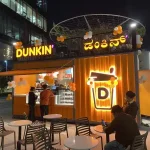 Container Cafe
Container Cafe